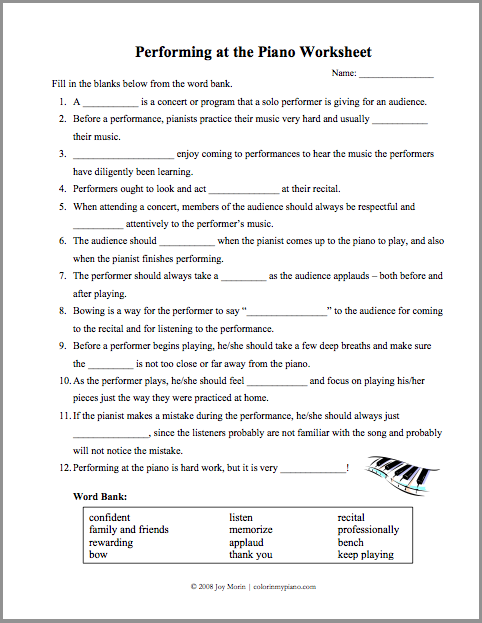I haven’t talked about improvisation lately, and in the past I’ve only spoken of the value and benefits of improvisation in the piano lesson in a rather academic-y way — and so today I’d like to discuss some specific benefits I’ve seen develop in a particular student of mine as a direct result of our improvisation activities.
Some background on my student: she (let’s call her K.) is just a beginner, having started lessons in January of this year. K. is seven years old, and is now nearing the end of the Primer level of the Faber Piano Adventures.
Here’s what I’ve seen in K. so far:
- The freedom to explore and be creative. She is learning by exploration. She enjoys figuring out how to play tunes by ear, without any assignment or direction from me. She’ll say, “Look! I figured out how to play Mary Had A Little Lamb!”
- She is discovering musical concepts on her own. She has already figured out — all on her own — that when she plays tunes in certain keys, she needs to use the black keys for them to sound right. It’s astonishing when you think about it — she has actually discovered the reason behind key signatures and how transposition works, all by herself! I expect that when we actually start talking about these concepts together, she will find these ideas easy to absorb because she already “gets it.”
- Her ear is developing in a way that is far more efficient and practical than me drilling her with intervals (for example) over and over. She knows what the interval of a 3rd should sound like when she sees it on the page, and her fingers then know what to do.
- We’re having fun! Improvisation is a great way to end a lesson. She is always excited to improvise on the black keys.
To sum it up, improvising regularly with my student has helped her realize the freedom that comes with the art of music, rather than placing a limit herself to play only “what’s on the page.” And this is causing her to understand how music works all the better.
Creativity At Work
K. surprised me last week with a little composition she wrote. And she created her own kind of shorthand for notating her composition onto a sheet of paper. It looked something like this: CDECCDEEFGGEDDDDEDC. She informed me that the long notes were notated by having two of the same letter in a row. Continue reading “Improvisation Yields Creativity and Musical Understanding”




 Just added: a new free, printable worksheet called:
Just added: a new free, printable worksheet called:
 Many of you may remember being required by your piano teachers growing up to practice a certain amount of minutes each day/week. Perhaps your requirement looked something like this:
Many of you may remember being required by your piano teachers growing up to practice a certain amount of minutes each day/week. Perhaps your requirement looked something like this:


 Just added: a new free, printable worksheet called:
Just added: a new free, printable worksheet called:






